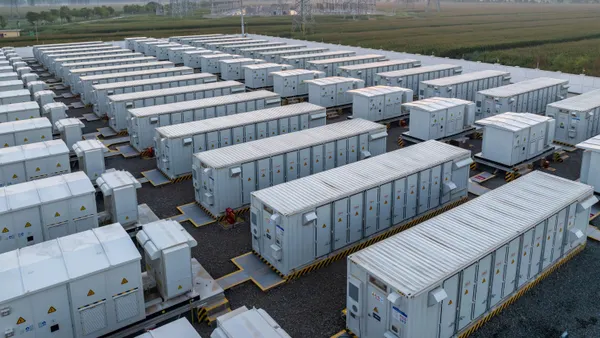The following is a contributed article by Steve Kerber, Vice President of Research at UL Firefighter Safety Research Institute.
As the lithium-ion battery energy storage system (ESS) industry grows and demand for renewable energy increases, ESS facilities will likely continue to proliferate in communities and urban areas around the world, providing multiple benefits, along with some risks.
Lithium-ion batteries are generally very safe, but they have been linked to fire, explosion and hazardous material exposure under certain conditions. The April 2019 explosion at a 2.16 MWh lithium-ion battery ESS site in Surprise, Arizona, left four firefighters severely injured and spurred the energy industry and first responders to grapple with new safety considerations.
Given this is a fairly new technology, most first responders have limited experience with lithium-ion battery fires, which behave differently than typical fires.
"Lithium-ion batteries have flammable chemical electrolytes and are susceptible to thermal runaway if the battery has faults, contaminants or experiences physical or operational stress," said Ken Boyce, principal engineer director, UL Energy and Power Technologies division. "Additionally, lithium-ion batteries can spontaneously reignite hours or even days later after a fire event if cells go into thermal runaway, making decommissioning, deconstructing and storing more complicated. Adding to that complexity, safety requirements for ESS sites are still evolving as more information about the technology becomes available," he said.
Research and curricula for first responders on lithium-ion battery fires on this scale is inadequate, leading to situations where the fire service must piece together limited information to suppress fires and keep themselves and surrounding communities safe. This was the case in Surprise. Firefighters did everything in accordance with the most recent training and information available to them and an extremely dangerous – potentially avoidable – explosion still occurred.
Learning from the APS storage explosion
Typically, these kinds of near miss events are examined only when a fatality occurs, but UL Firefighter Safety Research Institute (FSRI) had the unique opportunity to interview the firefighters and learn from their experiences. This is the first time UL FSRI took the approach of capturing the experience of surviving firefighters to inform an investigation and incorporate their firsthand experience into fire safety recommendations.
The investigation and report, "Four Firefighters Injured In Lithium-Ion Battery Energy Storage System Explosion – Arizona", covers UL FSRI’s understanding of how the fire and gases behaved, the moments leading up to the explosion and recommendations for lithium-ion ESS safety training and ESS sites.
The firefighters’ commentary provided context to the research, leading to actionable insights for the fire protection community and energy storage industry to prevent future close calls and potential fatalities. With 1.1 million firefighters in the U.S. and nearly 30,000 fire departments, this investigation provides life-saving perspective and guidance for the fire service community and lithium-ion battery ESS sites.
So what can be done right now to improve safety?
- Lithium-ion battery ESS should incorporate gas monitoring that can be accessed remotely.
- Lithium-ion battery ESS should incorporate robust communications systems to help ensure remote access to the battery management system, sensors and fire alarm control panel remains uninterrupted.
- Owners and operators of ESS should develop an emergency operations plan in conjunction with local fire service personnel and the authority having jurisdiction and hold a comprehensive understanding of the hazards associated with lithium-ion battery technology.
- Signage that identifies the contents of an ESS should be required on all ESS installations to alert first responders to the potential hazards associated with the installation.
- Lithium-ion battery ESS should incorporate adequate explosion prevention protection as required in National Fire Protection Association (NFPA) 855 or International Fire Code Chapter 12, where applicable, in coordination with the emergency operations plan.
- New lithium-ion battery ESS should be built in accordance with NFPA 855, the most current standards available for safety, and we are calling on local governments to mandate adoption within their cities and municipalities.
UL FSRI has already started conducting full-scale research to understand the most effective and safest tactics for the fire service, to determine the most effective fire suppression and explosion prevention systems, and to evaluate the effectiveness and limitations of stationary gas monitoring systems for lithium-ion battery ESS.
We will release findings from our research and soon make new curricula available for the fire service. We urge first responders and lithium-ion battery ESS sites to learn from the Surprise incident and implement additional safety measures.












